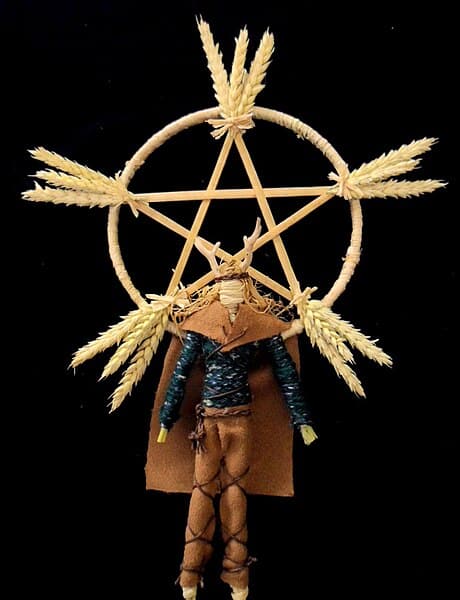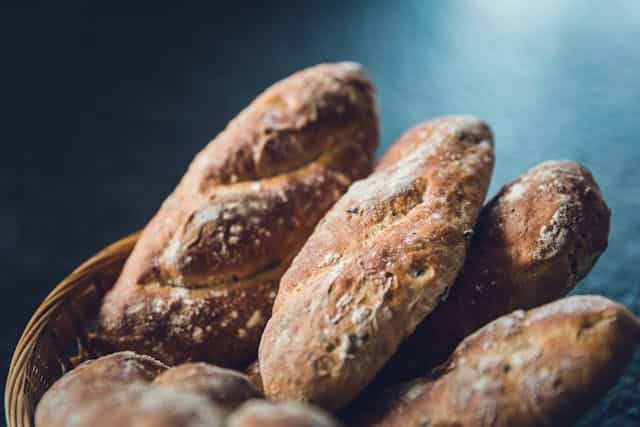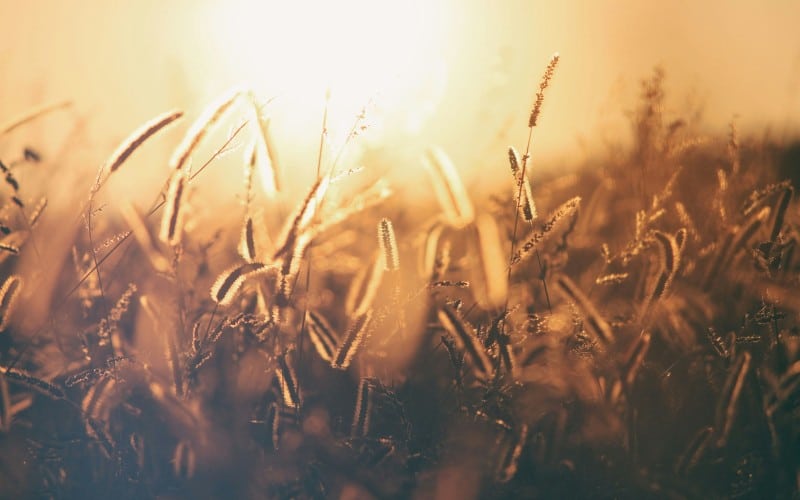Lughnasadh is a Celtic festival that celebrates the harvest. It is celebrated every year on August 1st. It’s a wonderful occasion to gather with friends and loved ones to feast and give thanks for the season’s abundance. It’s named for the Celtic god Lugh, who is associated with skills and crafts. As well as being a celebration of this deity, Lughnasadh also honors Tailtiu, Lugh’s foster mother who, according to the myth, cleared the land in Ireland, thereby allowing the grain harvest to take place.
I love this sabbat for its joyous vibe and bright, sunny energy. If you’d like to observe Lughnasadh this year, then you’ll find some ideas below to get you started. From creating solar magic to making gorgeously more-ish Lammas loaves, have fun finding your way with this festival.
Lughnasadh Goddesses
Tailtiu is a powerful Celtic Earth goddess who forms part of a divine triad along with Anu and Danu. As I mentioned above, she was the foster mother to Lugh, the god from which Lughnasadh got its name. She is deeply connected to the harvest, sovereignty, and rebirth. The harvesting of wheat, especially, is linked to Tailtiu.

The Greek goddess Demeter is also associated with the harvest, and the fertility of the earth falls under her remit – making her a perfect deity to honor as part of your Lughnasadh’s celebrations. Demeter presided over the cycle of life and death. Crops, grains, and food in general are all her domain.
Lughnasadh’s Position on the Wheel of the Year
On the Wiccan Wheel of the Year, Lughnasadh is preceded by the Midsummer festival of Litha in June, which marks the solstice. This sabbat is a celebration of the sun and its blessings, and many Wiccans get up early to watch the sun rise on this day and stay up to see it set. Bonfires may be a key element of the festivities, too.
The sabbat that follows Lughnasadh is that of the fall equinox, Mabon, which occurs between September 21st and 24th. It’s a celebration of the second harvest and is also referred to as the Wiccan Thanksgiving. At this point in the year, dark and light are in balance, and from here on the hours of daylight will gradually shorten as the Mother aspect of the Goddess transforms into the Crone.
Lughnasadh Rituals
There are plenty of rituals you can enjoy to mark Lughnasadh, many of which can be continued throughout the whole year. Try your hand at one (or more) of the ideas below during this sabbat.
Make a Magical Lughnasadh Altar

Creating an altar to mark Lughnasadh is a lovely way to give thanks during this special harvest celebration. An altar can serve as the focal point for other rituals, meditations, and spellwork, too. You may wish to place symbols associated with Lughnasadh on your altar. These include:
- A small bowl of grains
- A slice of Lammas bread (you can find an easy recipe below!)
- Candles, to represent the sun
- Corn dollies, traditionally made with the last sheaf of the harvest
- A sickle, or an image of one
Anything else that feels right to you can go on your altar, such as feathers, leaves, or twigs found on a nature walk. You could also add your favorite crystals or ones that are particularly associated with the sun, such as carnelian, citrine, and sunstone.
Work Some Sun Magic
With the sun high in the sky, there’s no better time to try your hand at some sun magic. Make some powerfully charged sun water by placing a citrine crystal in a small glass jar or bowl and then putting it in direct sunlight to absorb the sun’s magical energy. You can use this sun water in many versatile ways. Add it to your bath, use it in spells and rituals, or cleanse your tools with it.
Doing some yoga sun salutations is a profoundly positive way of starting your day, and is a great means of working with solar energy. While you go through your asanas, visualize this energy surrounding you, giving you drive and optimism for the day ahead.
Enjoy a Lughnasadh Feast
Serve up a Lughnasadh feast for friends and family to honor this sabbat. If you can, visit a local farmers’ market or head to a local store to get the supplies you’ll need, and choose ingredients that are in season. You could also ask each guest to bring a dish, to really make it a communal affair.
Lammas bread is traditional fare for this sabbat. Other foods that are perfect for the celebration include berries, honey, barley and grains, sunflower seeds, grapes, potatoes, peppers, mushrooms, seafood, corn, goldenrod, yarrow, cinnamon, mead, and wine. Decorate your Lughnasadh table with fresh flowers, red, yellow, and gold-colored candles, and small sheaves of wheat, and prepare to enjoy a very special feast.
Make a Lughnasadh Corn Dolly
If you’re looking for an easy Lughnasadh craft activity to enjoy with the kids, this could be perfect! All you need is a couple of handfuls of undamaged, hollow straw (slightly dampened), and some raffia or ribbon.
- Bundle together some stems to make the core of the dolly. This should be about the size of a biro.
- Tie five straws of about the same width around the core, tying them as close to the wheat heads as you can. Bend each stem to a right angle so they are each pointing in a different direction, having the last one pointing to your left.
- Bend this fifth stem upwards and then bend it right, so that it crosses the next two stems.
- Turn the core a quarter clockwise and repeat with the next stem.
- Repeat this process, each time turning a quarter of a circle clockwise so that the core continues to build up.
- Once you’ve finished, tie it off with a piece of raffia or ribbon.
A Recipe for Lovely Lammas Loaves

Making homemade bread for your Lughnasadh table is one of the most wonderful ways to celebrate this sabbat. Don’t forget to save a slice to put on your Lammas altar! Here are the ingredients you’ll need:
- 4 tablespoons honey
- 1.5 cups lukewarm water
- 1 packet of instant yeast
- 2 tablespoons sunflower oil
- ½ cup sunflower seeds – and a handful more for the topping
- 1.5 cups whole wheat flour
- 2 teaspoons salt
- 2 cups white flour
- 1 egg white
Start by whisking together the yeast, honey, and warm water. Allow it to stand until it’s frothy, which will be about five minutes. Put the sunflower seeds in a blender and pulse for a few seconds – they just need to be roughly chopped. In a bowl, stir together the sunflower seeds, whole wheat flour, and salt. Add the sunflower oil and yeast and stir until fully combined.
Next, add about half the white flour, using your hands to work the dough. Add in more white flour as you knead, until the dough is elastic and smooth. Now put the dough in a bowl, cover it with a clean towel, and leave it to rise until it’s roughly doubled in size. This should take around an hour.
Once this has happened, press down the dough and divide it into two loaves, then place it on a baking sheet (lined with parchment paper) and allow it to rise once more, for about an hour. Preheat your oven to 400 degrees. Brush the top of your loaves with the egg whites, and sprinkle some more (whole) sunflower seeds on the top of each. Finally, bake in the oven for about 20 to 25 minutes, until the tops of the loaves are beautifully brown.
Letting in the Lughnasadh Light
The Wheel of the Year has turned once more, bringing us to Lughnasadh, the first of the harvest sabbats. This is the perfect time to enjoy abundance, keep gratitude in our hearts, honor our ancestors, and build our energy for the darker days ahead. There are many ways to celebrate Lughnasadh. Feast, dance, and laugh with friends, give a nod to Lugh by learning a new skill, or create an altar before which to meditate on the season just passed. However you plan to spend this sabbat, may the blessings of the harvest be upon you.

